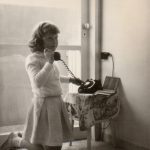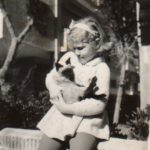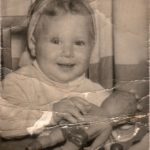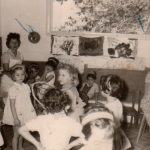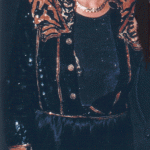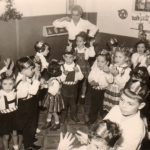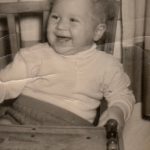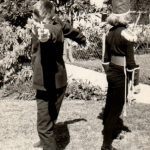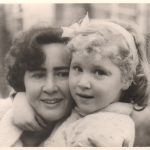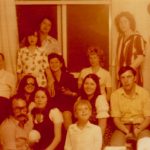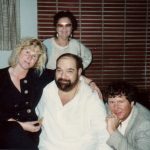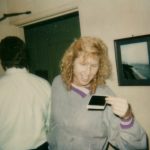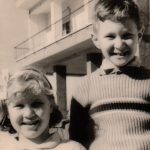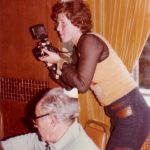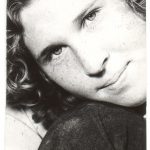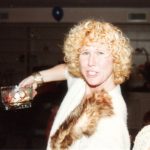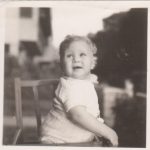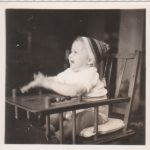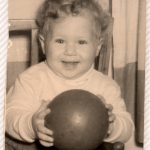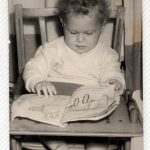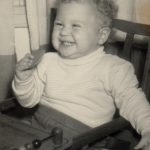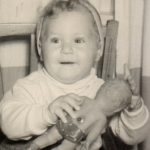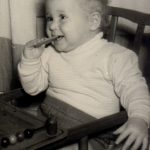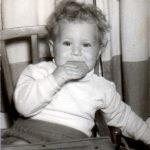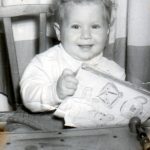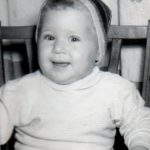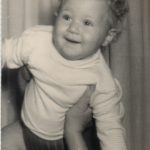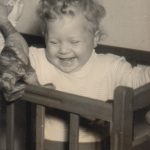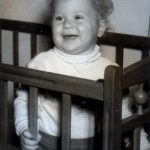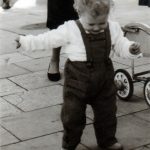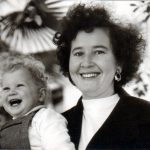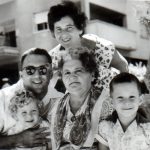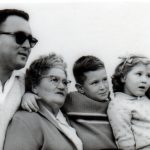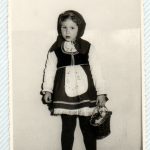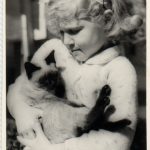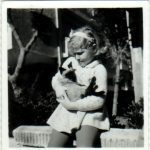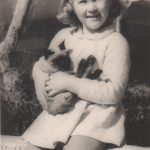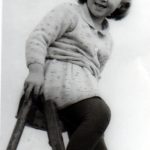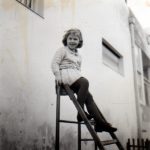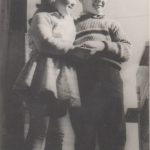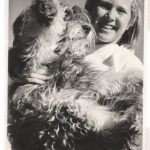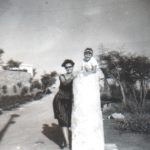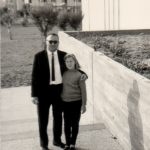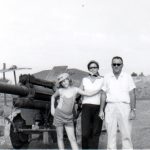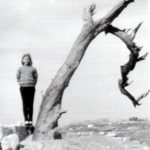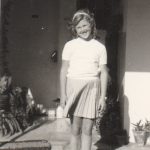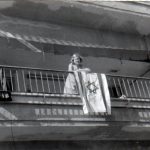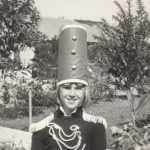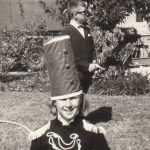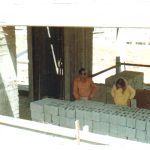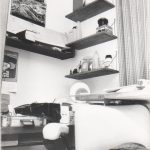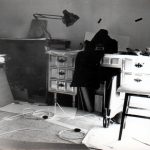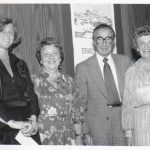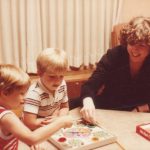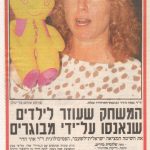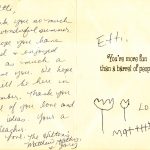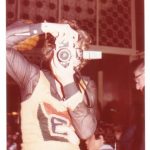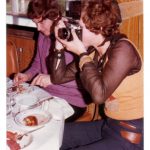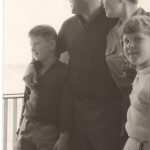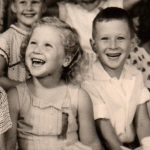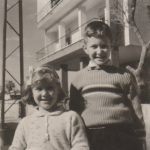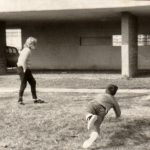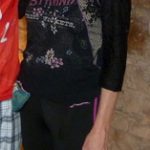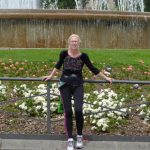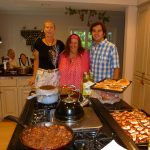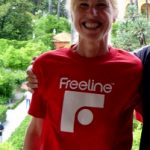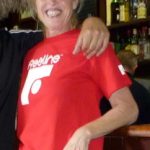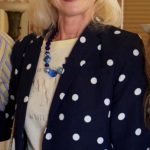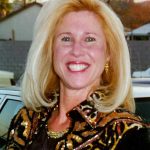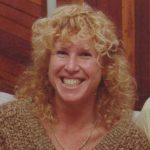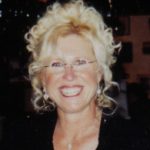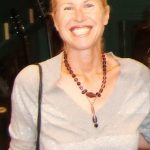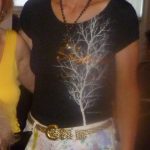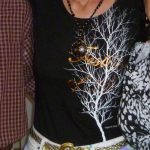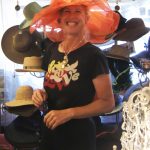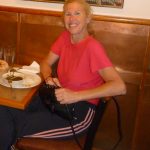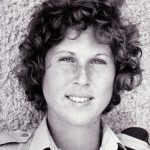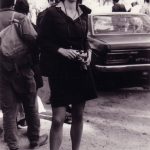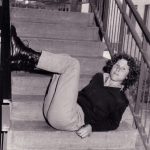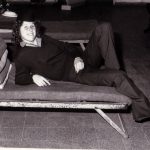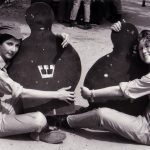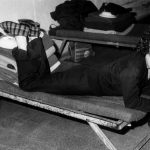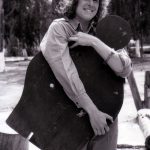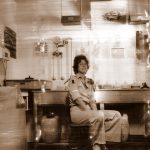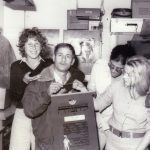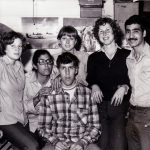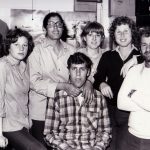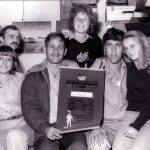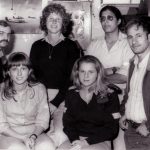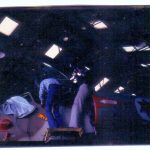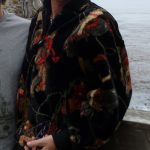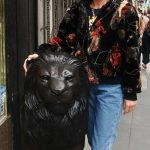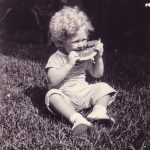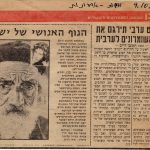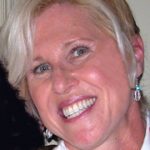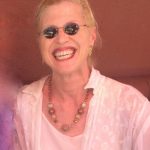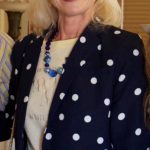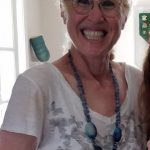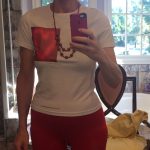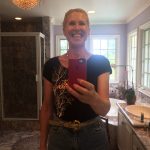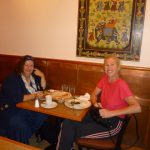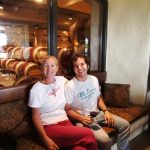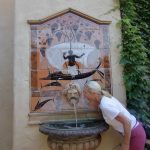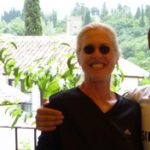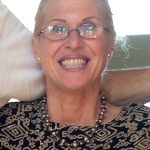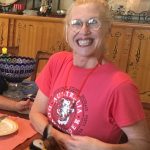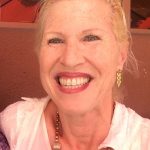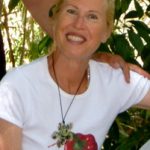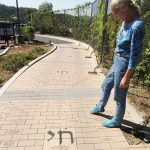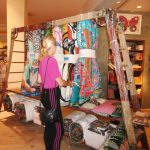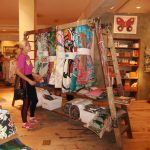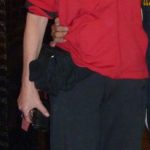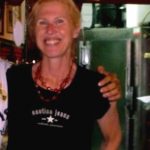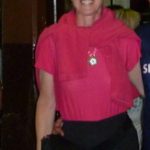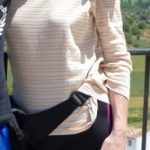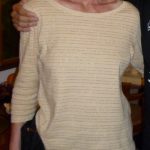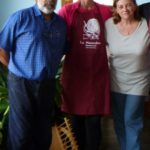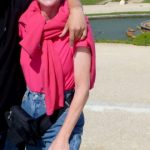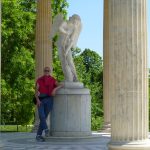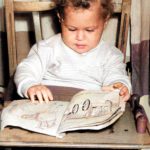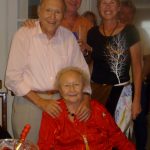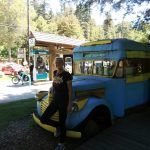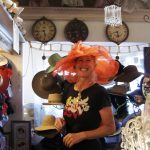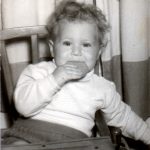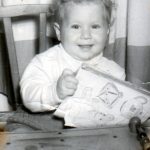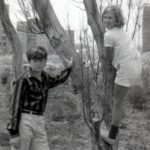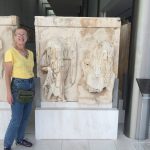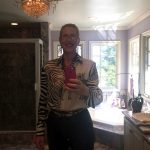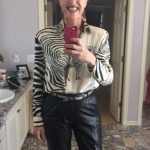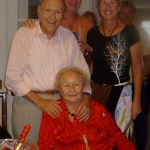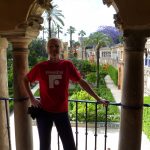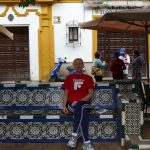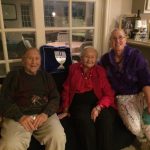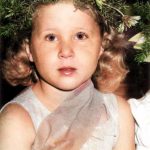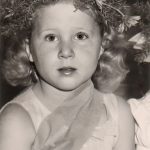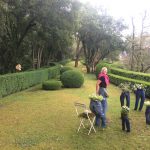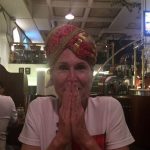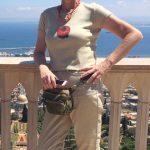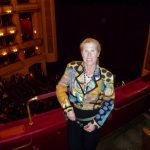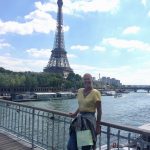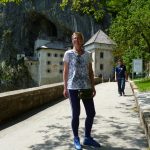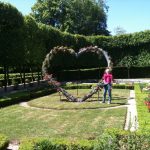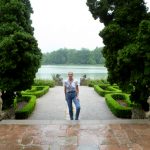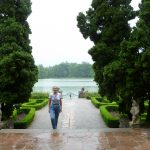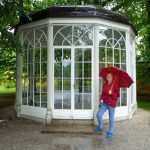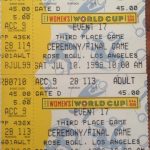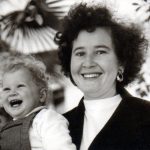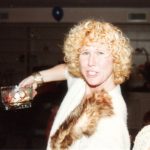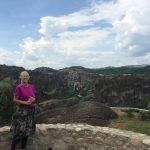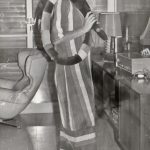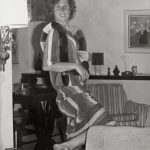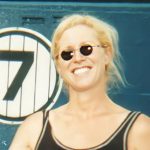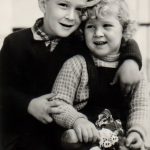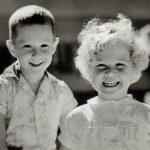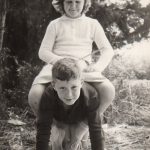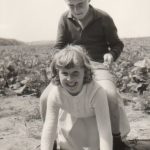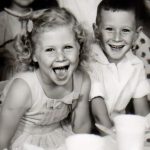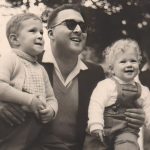Etti Hadar
Since 1956, my road is always under construction
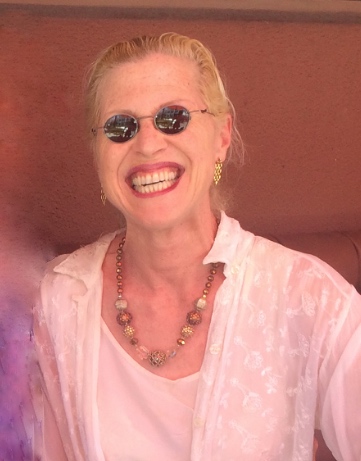
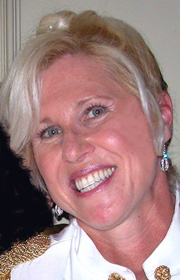
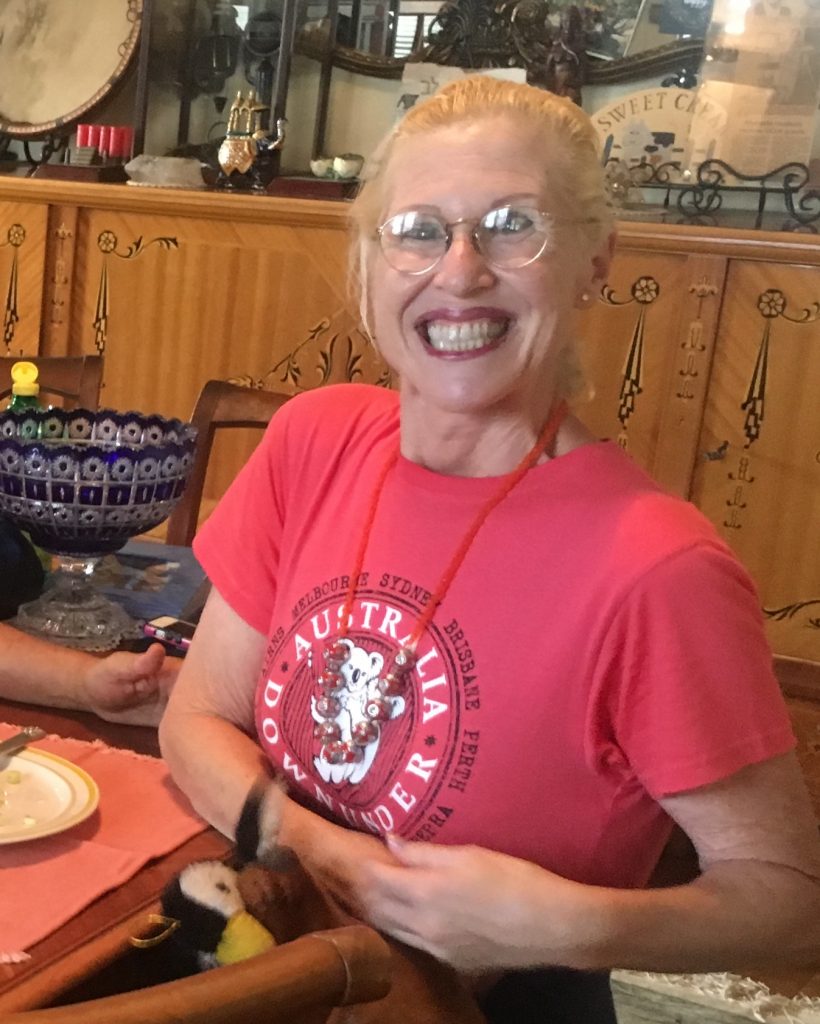
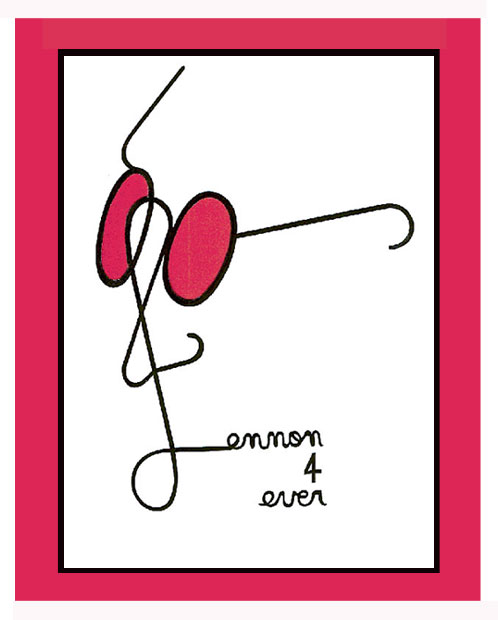
Past, Present and Future
What did I do on the night John Lennon was murdered
In the early evening of December 8, 1980, I was driving my cream-colored 1964 Chevy Malibu clunker home following a long day at school and seeing patients at the clinic. It had rained earlier in the City of Angels. Outside, the lights from the flashing holiday decorations, neon signs and the countless poles created a stunning reflection off the damp street's gleaming surface. The motor of my windshield wipers was broken, so I had to drive more cautiously than normal on the wet roads due to poor visibility. As a twenty-four-year-old “starving” graduate student, it didn’t bother me that my car’s interior was hideous, that the polyurethane foam padding was visible through the tattered upholstery, or that the broken antenna only allowed me to listen to one radio station. Thank goodness I was able to put what little money I had toward a course of study that not only fulfilled me but also challenged and encouraged me academically and gave me reason to believe in a brighter future.
In those days, there was no such thing as the ubiquitous internet, chiming texts, or social media. The only program airing on my single radio station that evening was the Monday night football game. The New England Patriots were facing off against the Miami Dolphins. Both teams were tied at 13. While traveling east on Santa Monica Boulevard and set to cross the light at Doheny Drive, the invisible border between Beverly Hills and West Hollywood, I heard Howard Cosell, interrupting his regular game broadcast with a news alert: “Rock legend and former Beatle John Lennon was dead. Yes, we have to say it. Remember, this is just a football game, no matter who wins or loses," Cosell stated. "An unspeakable tragedy, confirmed to us by ABC News in New York City. John Lennon, outside of his apartment building on the West Side of New York City, the most famous, perhaps of all the Beatles, shot twice in the back, rushed to Roosevelt Hospital, dead on arrival."
I continued driving while in a state of shock, horror, and disbelief at what I had just heard. I've spent the last several years of my life preparing for a career combating violence and assisting those suffering from post-traumatic stress disorder, and now I feel frightened and powerless in the face of such horrible news.
Driving as though I’m in some kind of autonomous vehicle, I steered my inbuilt GPS to visualize images, reorient my thoughts and restore equilibrium. Having begun to pave access to my strengths, I pulled into the parking space at the back of my building on North Fairfax Avenue in Hollywood and just set there for a while. Skipping three steps at a time, I walked into my apartment on the second floor.
I went straight to the dining table, which also doubled as my desk. There was a mountain of strewn paperwork, books, and research papers on abnormal psychology and related topics. I got a blank sheet of white paper and, with a single stroke of the marker, sketched the graphic layout for the Lennon 4 Ever poster. Making sure to include John Lennon's iconic nose to resemble a G-clef. It was critical for me to capture and freeze his musical talent and represent the Fab Four Beatles. I then enlarged the sketch to a size of 20 by 30 inches.
Having a fully equipped art and photography studio in my flat, I took a silk mesh and stretched it into a wooden frame. I smeared emulsion onto the silk mesh and then exposed the image to a light source. The exposed regions were rendered ink impermeable by blocking the silk apertures. I connected the wooden frame into the printing table I built few months earlier. A squeegee stroke across the screen deposited ink into the mesh openings, and a backstroke brought the screen briefly into touch with the paper along the line of contact. This caused the ink to wet the paper and pulled through the mesh pores as the screen sprung back after the squeegee has passed. I repeated the motions several dozen times, always starting with new sheets of paper
and trying new color combinations and techniques.
I revived John Lennon hours after his death in my modest flat on Fairfax Avenue. The original silk print was extensively distributed a few days later (copy is attached here).
Over the course of my career as a clinical psychologist, I’ve come to realize that the use of visual art was crucial in helping me deal with painful emotions and experiences that I didn't feel comfortable discussing in words. There was a fusion of mind, heart, and soul represented via the visual arts. For me, it was a natural and symbolic means of making contact in my pursuit of balance and harmony. To this day, I have communicated my feelings of happiness, profound loss and other contrasting occurrences using a combination of graphic components, written words, and many nonverbal signals.
Years of creative thinking and therapeutic practice have led to flexible thinking, allowing me to think in multiple dimensions and directions. Today, I use these tools in tandem with modern technology to assist in the development of successful solutions in a variety of fields such as robotics, inventions, 3D printing, the fight against sexual exploitation and human trafficking, etc. One of my favorite areas of research is historical studies and genealogy. I record ancestral information on my canvas in every hue of the rainbow. I've given voice and prestige to the neglected and unseen people we had no idea existed! I enter databases, cross information, peel layers, and bring old, brittle, and rusted papers to light. I reveal the stories of families and individuals that have been concealed in archives and crammed into thick binders, collecting dust, brown blotches, and infested with mold and mildew.
They were here! Artists, creators, entrepreneurs, fighters, scientists, dreamers, believers and slackers, all people like you and me. I aim for future generations to know about these giants. I make my home happily in the corpus callosum, which is the bridge connecting the past, present and future.
Etti holds a lamb in New Zealand, 1991
Incest
Not a Child Play

Play It Safe…with SASA
Outside of my immediate family, there are just a handful of people who have (unwittingly) motivated me to forge a path that is, and always has been, a work in progress:
Käthe Kollwitz art had a great impact on me. Her artistic output covers a wide emotional spectrum, from the genuinely aspects of life suffering per se (such as poverty, death, hunger, and war) to the truly joyful and uplifting aspects of existence (such as love, family, values, and friendship).
As a teenager, I read Virginia M. Axline’s book “Dibs in Search of Self.” It was a portrayal of a young boy attaining a successful quest for identity through therapy. This humanistic approach piqued my interest. I fantasized about becoming the one who helped comparable youngsters achieve self-actualization by using therapeutic approaches outside of the sandbox.
Dr. Burt Brent was another significant influence in my life. As a young adult, in the mid 1970s, I read an interview with Brent, a plastic surgeon who reconstructed Paul Getty III’s severed ear. He paved a road and “permitted” me to mix my passion for the sciences with that of the arts. in the aforementioned interview, he described the pioneering work of Dr. Radford Tanzer, a Dartmouth surgery professor who pioneered the cartilage-sculpting technique. “I’d have fresh cadaver cartilage in the refrigerator and I’d practice carving on the kitchen table,” Brent explained. He didn’t give up. He ate, slept and breathed his newfound craft. Brent was influenced greatly by his maternal grandfather, who taught him carpentry and cabinmaking. Despite considering a career in art, he was always surrounded by medicine because his father was a physician who had an office in the basement of their home. Eventually his father influenced him to pursue a career in medicine, and Brent decided to study plastic surgery so that he could employ his artistic skills in that discipline.
I was determined to do the same, use my artistic aptitude and my interest in science to benefit others. I aspired to study design and become a reconstructive plastic surgeon, travel the world repairing birth and acquired body deformities.
I originally planned to attend the Pasadena Art Center College of Design, but I quickly changed my mind and began taking classes that would help me reach my dual goal, such as anatomy, chemistry, physics, and a few prerequisite classes in psychology, machine shop, 3D-design, and architecture. My psychology professor was the one who taught me that without mending the mind, one cannot cure the body. It was a perfect fit for me.
Yet again, I took a detour on the path of self-discovery and decided to seek a career in the field of mental health. To support myself, I worked in various jobs such as logo design, stills photography, B&W photos processing in a lab, teaching art during the week in an elementary school and a Sunday school, and building sets for children’s theater productions. During my college studies, I was on the dean's list every semester, which earned me a little stipend. It was life-changing and helped pay my rent for a few months. My otherwise perfect scores were marred or rather, adorned, by a C in American History. The class was taught by a hostile, antisemitic professor, and I had to confront him on multiple occasions. When he threatened to fail me, I replied, “I will wear it as a badge of honor and expose your personal biases, insuring you never teach again.” Over the years, the C stood for Confronting bigotry and injustice.
I continued to study and intern year-round. To help pay for my graduate program and my advanced degree, I took out a student loan. After graduation, I began repaying the loan, often making extra payments and instructing the bank to apply the excess funds to my balance. I finished the payments in about five years. Paying extra every month, allowed me be debt-free more than five years ahead of schedule. I felt blessed and grateful. My degrees include a B.A. in Psychology & Art, an M.A. in Marriage, Family & Child Counseling, and a Ph.D. in Clinical Psychology.
An artist can capture a fleeting feeling, attitude, or fantasy with a few swift strokes of the brush or a snap of the camera, allowing a viewer to examine it at his or her leisure long after the original experience has passed. Despite popular belief, art does not necessarily imitate life. There are many of us who, when dealing with the aftereffects of trauma, are unable to freeze the inner process in time so that we can scrutinizing it at our leisure. My life's work has been dedicated to preventing and reducing the prevalence of Post-Traumatic Stress Disorder (PTSD), child abuse, sexual abuse and human trafficking.
I sensed that my humanistic approach, creativity, intuition, clinical abilities, humor, and, most importantly, compassion and empathy would inspire others to take courage actions. My goal was to help people learn how to transform hope into happiness through a combination of therapeutic expertise and creative inspiration.
The California Child Abuse and Neglect Reporting Act was signed into law in the early 1980s. In 1981, there were just a few established child sexual assault intervention programs. Professional medical and law enforcement agencies were ill-equipped to handle the influx of new cases. The field was too new, and the amount of knowledge and skills collected was insufficient. It’s true that many of us were trailblazers who ventured into largely uncharted territory. Although I was still young, I had a wealth of experience working with survivors in a clinical setting. There were many occasions on which I was asked to give seminars for various groups, including well-respected professionals, community groups, municipal officials, and educators.
When I began my clinical internship at Cedars-Sinai Medical Center in Los Angeles, I worked in the Victim of Violent Crime Department of the Thalians Psychiatry & Behavioral Health Center, where initial intervention occurred in the emergency room, followed by crisis intervention sessions. Although Cedar was our hub hospital, I was on-call 24/7 assisting victims in emergency rooms throughout the Los Angeles area.
My interest in early childhood trauma prompted me to eventually join the Family Stress Program at the Julia Ann Singer Center in Los Angeles, where I participated in counseling, training and supervision of abused children and their families. The program employed an interdisciplinary approach to clinical intervention and case management. As responsible professionals who must deal with child abuse cases, we sought the best guidance available while we developed our own approach to the problem at hand. A Westside consortium was formed, consisting of numerous entities such as mental health clinics, hospitals, law enforcement and child protective services. We got together on a regular basis to share knowledge, case studies, lectures, and so on. I was also frequently traveling to accessible seminars to share-teach our skills and bring back more methods.
In the course of working with molested children, many clinicians felt helpless when dealing with issues of child abuse. They attempted, but failed, to use "all-purpose" diagnostic and therapy procedures. Others have given up hope of ever interacting with a child victim. The walls were either too high to scale or too thick to breach.
As a result of my professional displeasure with approaches in which children felt forced to please another authority figure, I devised, tested, and later sold a new evaluation, treatment, and preventative strategy for professional usage.
looks and plays like a game, but it is much more. The tool was developed in order to enable children encounter and respond to the significant issues of child abuse and molestation through the familiar and safe medium of playing a board game while interacting with a puppet/doll, cards and game pieces.
When words fail, children communicate via action. Play, drawings, and games enable motoric enactment. They help the clinician comprehend what is bothering the child by bridging the gap between action and meaning. Games create a safe environment in which behavior can be observed and discussed in relation to real life situation.
After Play It Safe…With SASA was tested and proven to be effective, it was published and sold to professionals. I traveled throughout the United States and other countries, training clinician and law enforcement personnel on child abuse issues and how to use the method. After I spoke at the first International Rape conference in Israel, the Ministry of Social Services invited me to deliver training for their professional employees a few times a year. In the United States we established a prevention programs in many head starts facilities and elementary schools.
SEXUAL ABUSE IN JEWISH FAMILIES
Over the years, I've done many studies and authored scores of research papers. "Incest and Molestation in Jewish Families" was a particularly essential study for me. At the time, Jewish community officials summoned me and requested that I quit investigating this topic in exchange for a hefty stipend. My humanity, integrity, name, and ethics were not up for grabs! I would never, ever give in to anyone. On the contrary, it infused me with new life force, motivating me to become an advocate and survivor's voice.
“If we could have collected all the tears of individuals who survived child sexual abuse and rape, we would have witnessed a modern-day flood,” I wrote in the introduction to my 1992 study.
I was a researcher, clinician and formidable advocate for victim's rights more than three decades before #MeToo movement; twenty-five years before the conviction, in 2007, of Moshe Katasav, the eighth President of Israel, on two counts of rape; and thirty-eight years before the Jewish American, film producer, Harvey Weinstein was found guilty, in February 2020, of rape in the third degree and a criminal sexual act. I was at the forefront of working with survivors and their families, helping them in breaking the silence and cycle of sexual assault. A revolution is almost never spontaneous. It takes a grassroots effort to make a dent and percolate into the public’s consciousness. Today, social media plays a faster catalyst for spreading awareness about a wide range of social and political issues. I am proud of being a teeny-tiny spark in the rape awareness movement.
Erik Erikson wrote in the Journal of the American Medical Association (1972), “Someday, maybe, there will exist a well-informed, well-considered, and yet fervent public conviction that the most deadly of all possible sins is the mutilation of a child’s spirit; for such mutilation undercuts the life principle of trust, without which every human act, may it feel ever so good and seem ever so right, is prone to perversion by destructive forms of conscientiousness.”
All survivors of sexual violence are equal. Nevertheless, incest and sexual abuse of children brings out feelings of revulsion and/or disbelief in most people. In the last four decades, this forbidden topic and extreme form of sexual abuse has surfaced to the forefront of our attention. Incest has neither geographical boundaries nor socio-economic class. Its victims and perpetrators are estimated to be in the millions.
It’s been thirty-two years since I was among the many individuals who paid their respects to a friend’s father. The funeral procession lasted a mile long. We all congregated at the top Forest Lawn Cemetery, in the Hollywood Hills, the “who’s who” of the Los Angeles Jewish and film communities (not me!).
As the crowd dispersed, my friend asked me to stay awhile longer. I stood silently next to the freshly dug grave decked with dozens of floral arrangements, as I overheard my friend say, “Dad, today we buried you. Almost thirty years ago, you buried me alive. You violated and stole my childhood. While you were out conquering mountains of success, power, and deception, I was living in the valley of the shadow of death. You made this abyss of despair my permanent home. The time has come for me to leave it now."
Jews are no more or less likely to be victims of molestation and incest than any other minority religious group or the majority religion. One of the goals of the cross-cultural study (US and Israel) that I did was to lift the veil of secrecy around child molestation and incest in Jewish families.
In Jewish homes (and institutions), incest is not intended to exist. Some myths have become so ubiquitous that they dominate all logical thought, further injuring victims. These survivors continue to be victims, deprived of effective counseling, therapy, and optimal recovery toward a happy and successful life.
A Jewish family in crisis is no different than any other family. There is, however, one distinction. Somewhere along the way we Jews acquired or bestowed upon ourselves the attribute of family people who are non-violent. “Shalom Bayit” means peace in the home. In Israel and in the diaspora, we are afraid to let our Jewish and non-Jewish peers realize the reality because it is “Shanda fur di Goyim” – a scandal in the eyes of gentiles. The Jewish community, fearing the humiliation and disgrace that would result from any unfavorable disclosure, pretends to present itself in the best possible light before the harsh scrutiny of the outside world.
This mindset has done more harm than good to Jews. It forbade Jews from condoning or confronting the presence of incest, molestation, and familial violence inside families. The community had supported the criminal, trapped the family, prolonged the situation, and set the path for the child's emotional roller coaster as well as lifetime emotional and social disorders through denial.
There has been little research on sexual abuse in Jewish homes between the 1990s and the year 2020. Incest is a common occurrence that is often overlooked.
For my part, I'd rather let the survivors do the talking. Herewith please find the summary of the study on sexual abuse inside Israeli families, completed on July 21, 1994.
The Jewish Community Watch (JCW) had written on its web page: We “never set out to be a major organization. In 2006, Meyer Seewald’s best friend died tragically at age 17. The young man’s father set up a youth group in his late son’s honor where young teens gathered for camaraderie and support. In 2011, Seewald, himself a survivor of child sexual abuse (CSA), began receiving reports that the father was molesting boys who attended this program.
Further enquiries revealed that this person had a long history of abuse dating back decades earlier to Israel. As is so often the case, community leaders and rabbis in New York who were aware of his dangerous history preferred to handle it ‘internally,’ never considering how many more lives would be put in jeopardy.
After a website was set up to expose the molester and warn others of the danger he posed, hundreds of reports of abuse began flooding in from Jewish communities around the world. JCW’s scope of services quickly expanded to include victim support services, mass awareness events, staff screening for schools and camps, a website with hundreds of pages of resources, and much more.
The staff grew from a handful of volunteers working out of a 10 x 10 bedroom to over a dozen professional employees. A virtual ‘safe place’ has been created for victims to come forward, tell their stories, and receive the help and support they need.”
on May 19, 2015 JCW posted a letter titled, Incest: The Ultimate Coverup
I have been silent for far too long. I want the world to know about the abuse I suffered at the hands of my brother. What he did to me for years and who he really is. But I can’t. I am sworn to secrecy, I am shamed into silence. If I speak up, I lose everything, my family, and the literal roof over my head.
But I know I am not alone in this. Every survivor of incest I have spoken to is in the same situation. Our families have all chosen to protect the abuser and let us continue to suffer. We are revictimized every single day when we cannot call our mothers for advice about work. We are revictimized every single holiday when he is welcomed with open arms and we are turned away lest we make the abuser uncomfortable. We are revictimized by every family gathering, every Shabbat meal, and throughout daily life with painful reminders that we don’t belong. Because protecting a molester and the family reputation is more important than our safety, mental health, and well-being.
I never told my parents that my brother sexually abused me, about the worst years of my childhood when he used me for his own sexual pleasure, the premature and undesired sexual education I received even before I hit puberty. Because I knew in my heart of hearts, they would not believe me. How right I was!! When they found out, they threatened me “Don’t you dare have our son put on the Wall of Shame!” I cried and said, “Don’t you care about me? I’m your daughter, he hurt me so much.” To which they replied, “You are not our daughter anymore, he’s our son.” How could I argue with that? They had made it very clear where their alliances really laid and it was not with me. The abuse that their son had put me through rendered me no longer fit to be part of the family.
Another friend, whom I will call Esther for the sake of protecting her identity, was raped, physically abused by her father at the age of 6. It continued until she was 12. Her older sister also molested her until she was 17. She too never confronted her family about the abuse or disclosed it to them because they will deny it and disown her. They will call her therapist crazy. All the changes she has made within herself to be stronger and more assertive, they blame on others and say her friends are bad influences. They constantly make her feel guilty for doing what is best for her. She is trying to build up the courage and self-confidence to one day tell them about the horrible abuse she went through in the family. But like myself, she knows they will deny the truth and not take responsibility.
Another friend, Shira- name also changed, was threatened by her brother, who abused her for so many years, not to say a word because it could destroy his career. Her family has also warned her very strongly not to ever mention a word of it, but they will be otherwise supportive. Some support that is.
The stories are endless. Countless survivors of incest are cast aside, their needs unmet, unable to talk, unwelcome in their own families- because the families have decided to protect their reputation instead of protecting their children. As if it wasn’t bad enough that we were abused by the people meant to protect us and show us right from wrong, now we are told that the abuser holds a more important place in the nuclear family than we do. Our only sin? Being an innocent, vulnerable child that was abused by someone who knew better.
When will it end? When will it get better? Will it get ever get better? Will I ever be able to stand up in public and point to my older brother and say “because of you, because of your abuse” without fear of what will happen next? Will I lose everything if I speak up? I have already lost so much, all I want is a family to love me. Will they ever?
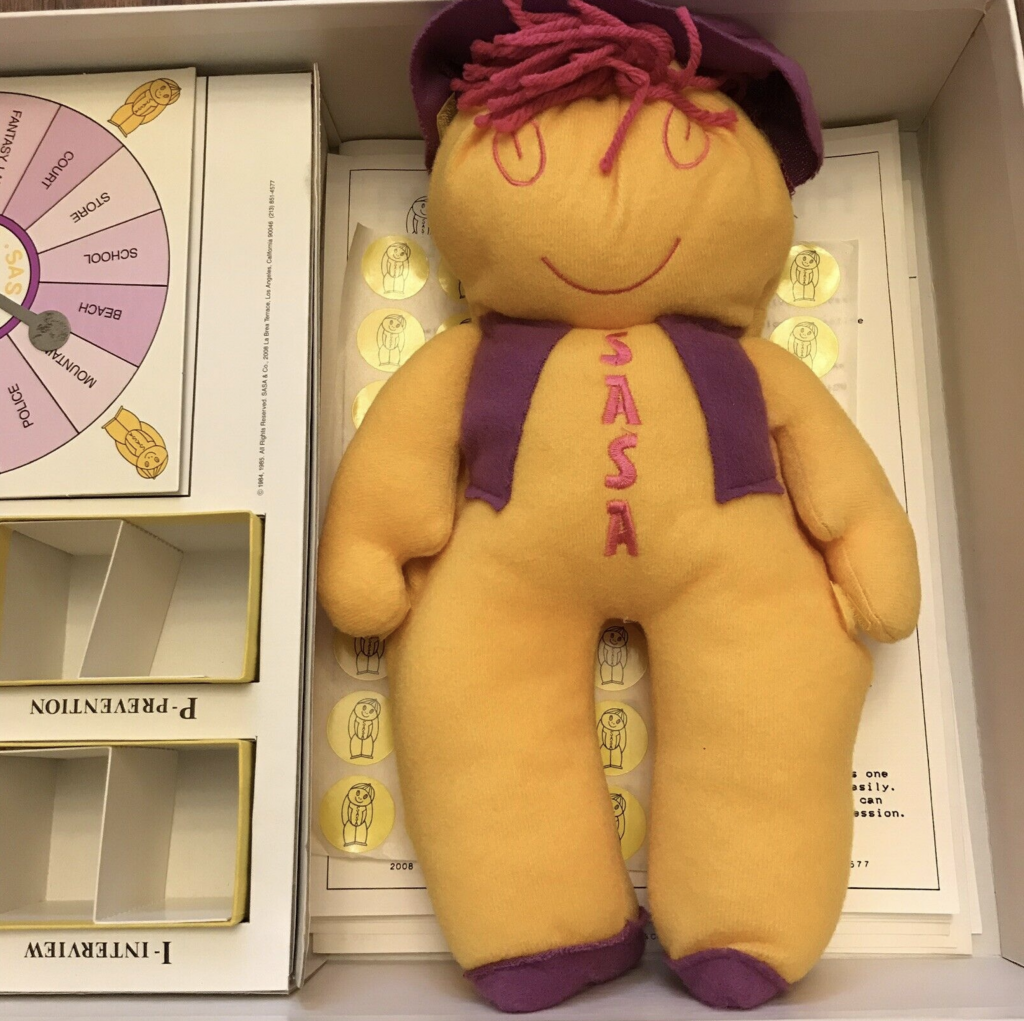
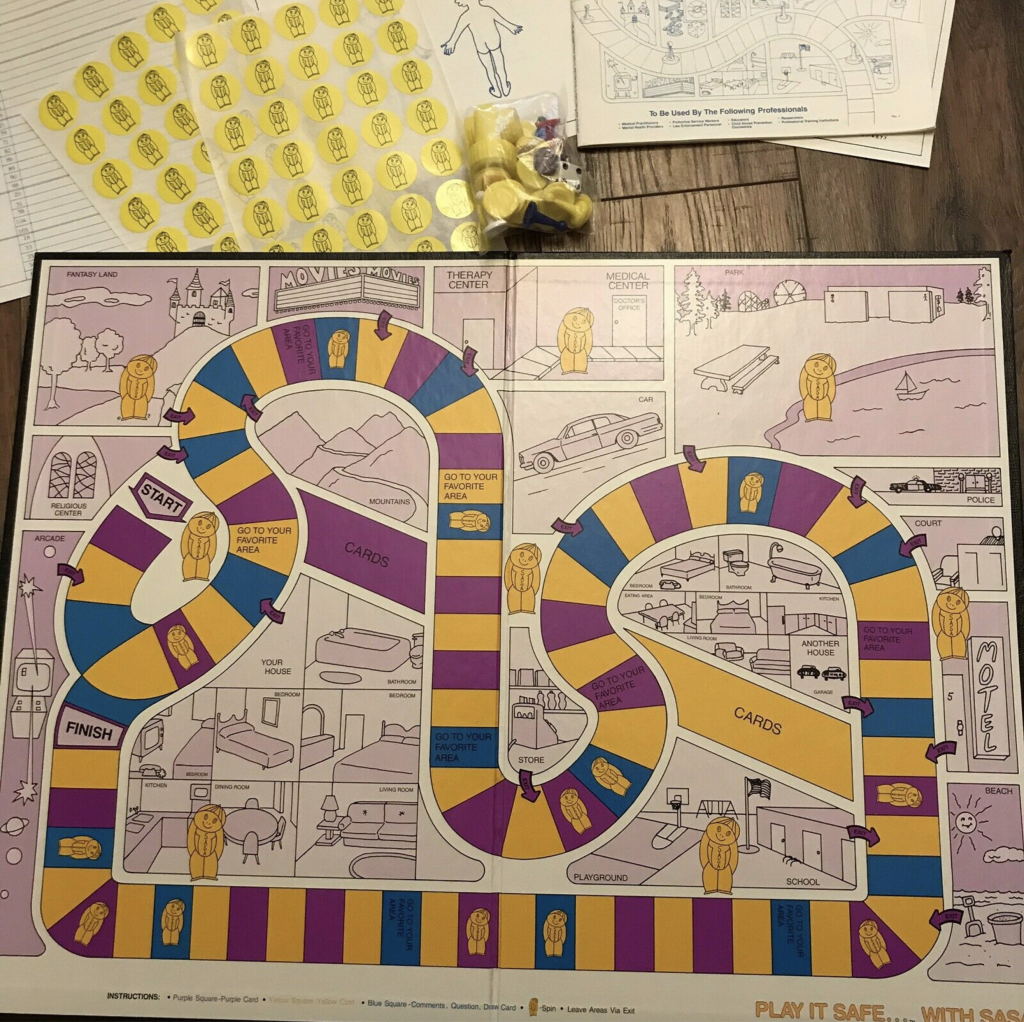
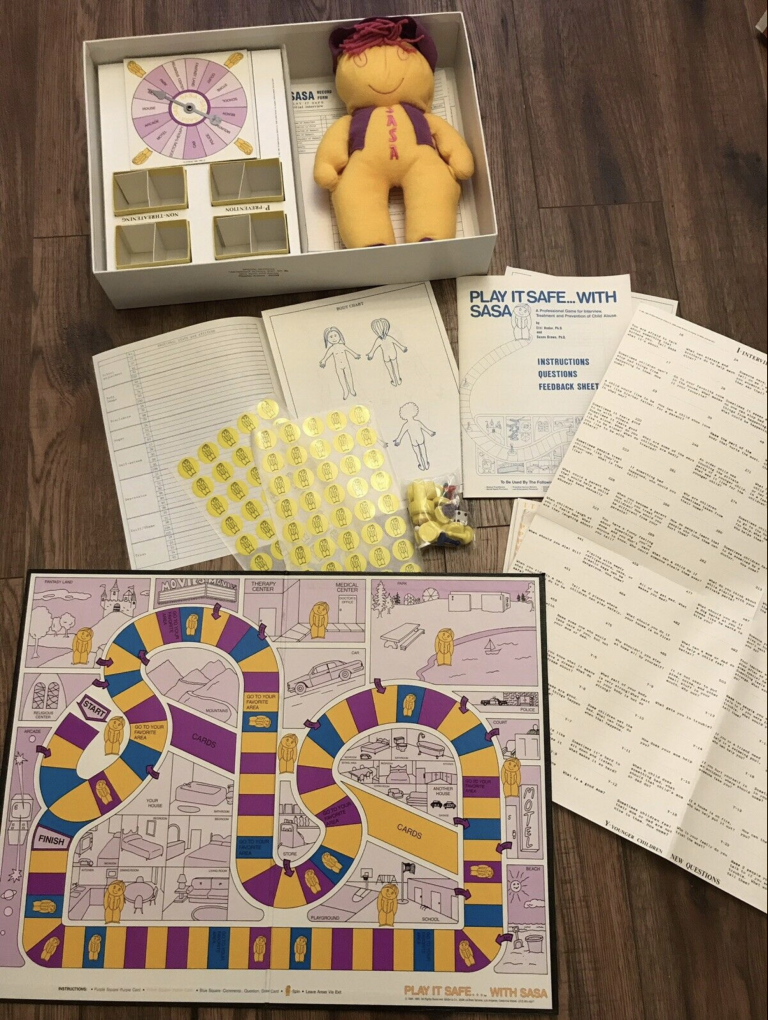
The Graphic Line
Our way of understanding the world is through the graphic language and incessant interpretation of visual symbols as well as associations stored in the subconscious
The Family
Making love on the beach is not an assurance to having children with blue eyes – Hadar Sayings
LIKES
Sushi, avocado, travel, cooking, baking, dinner parties, fixing anything broken, being on time, sleeping a little, dreaming a lot, getting up early, growing herbs, walking two hours or seven miles plus each day, listening to audiobooks, architecture design, baseball games, electric car technology, wearing sports attire and colorful shoes, learning a new thing every day, helping others, finding shortcuts, warm weather, natural daylight, suburban and country living, dogs, classical music and jazz
DISLIKES
Horror movies, standing in line, driving, especially in traffic jams, waiting at the doctor, bullies, heartless people, seeing fuzzy, sleeping a lot, bread, alcoholic beverages, cigarette odor, formal dressing, shopping, cold and wet weather
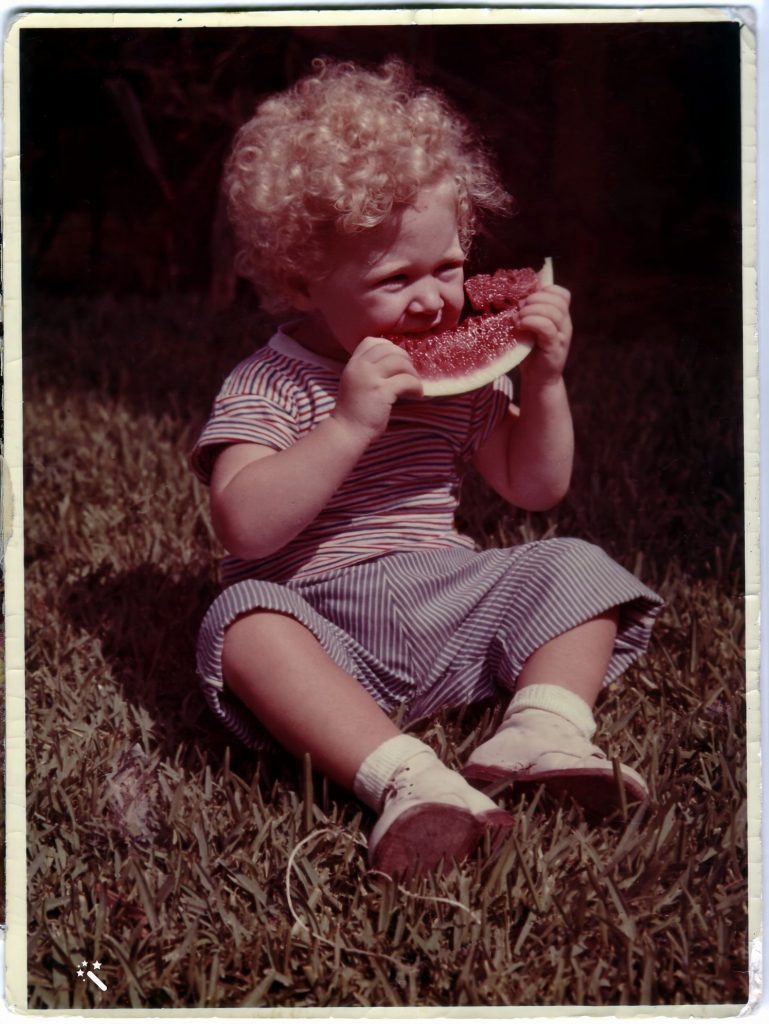
Etti, 1958
